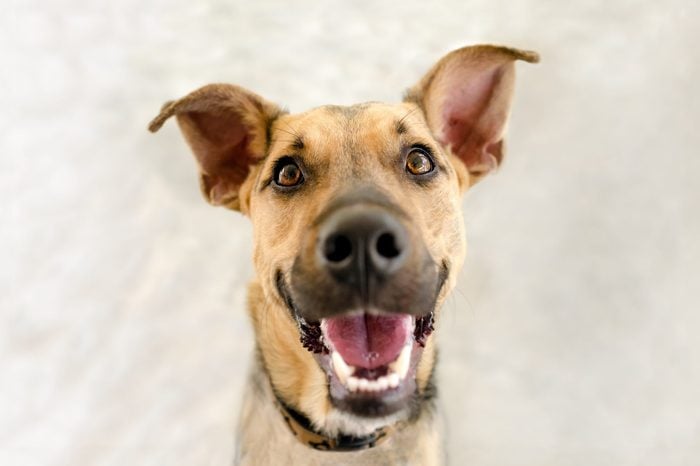
Doggie dos
As the proud owner of a cuddly pup, you know that taking care of a fur companion is no small feat. You’ve got to keep their food bowl full, make sure they’re drinking enough water, give them lots of love, and take them outside to do their business throughout the day. Find out 30 things your dog wants you to know.
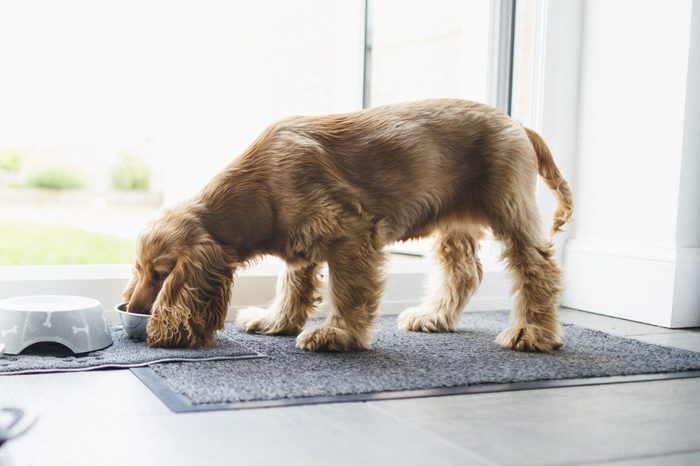
Eating
It’s a no-brainer that your pup needs to eat every day, but determining the appropriate quantity of food is a bit more involved. While most high-quality dog foods have rough estimations for how much to give your dog every day, there are some additional factors—including breed, size, body type, life stage, activity level, and environmental conditions—to take into consideration when filling your dog’s food bowl.
“For example, puppies should be fed more frequently than adult pets as dogs tend to need (and want) to eat less often as they get older,” says Carl Winch, DVM, a veterinarian for Banfield Pet Hospital. “Consult with your veterinarian who can advise on the best diet for your pet that meets their individual nutritional requirements and is appropriate for their life stage.” Find out the dog food brands vets buy for their own dogs.
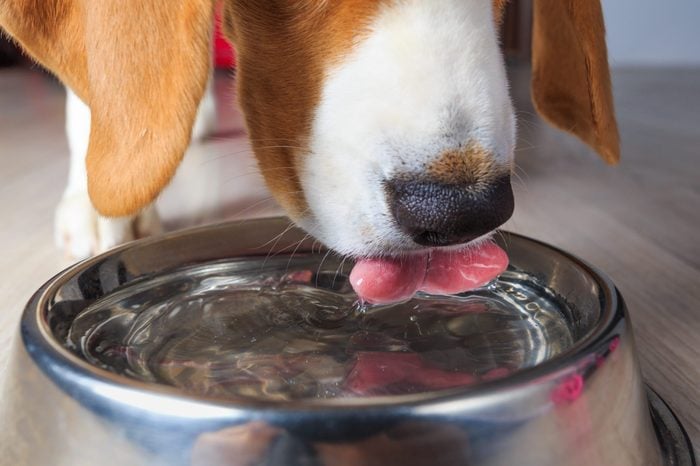
Drinking water
Just like for humans, dogs should consume fresh water every single day and throughout the day. “As a general rule of thumb, dogs should consume one ounce of water per pound of body weight per day, and additional water intake may be required on excessively hot days or after excessive exercise,” says Johnna Devereaux, a certified pet nutritionist and director of nutrition and wellness for Bow Wow Labs.
Winch says to check your dog’s bowl throughout the day to track their consumption and to refill as needed. If your dog makes a mess while drinking, these no-spill water bowls and elevated dog bowls should do the trick to keep your kitchen clean. Also, bring plenty of water with you if you venture outdoors together. Travel dog bowls and bottles are an inexpensive investment that will ensure your pet stays hydrated. “If you find that your pet is drinking more [or less] than usual, having them examined by your veterinarian is recommended as this can be a sign of underlying conditions,” Winch adds. Find out 10 other surprising signs your “healthy” dog is sick.
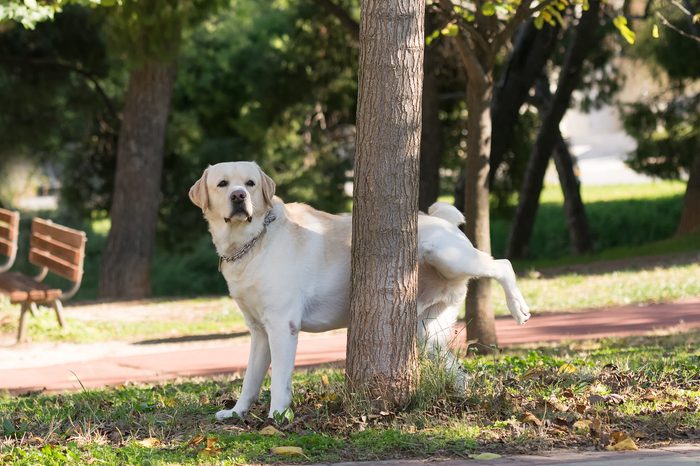
Urinating
There’s a variance in how often your dog will urinate, but they should be going three to five times throughout the day. The amount usually correlates with the quality of food they’re eating and the amount of water they’re consuming. For example, dog food higher in salt or additives can stimulate your pet to drink more, therefore producing more urine, notes Winch. And if they consume a lot of water, they should also eliminate more.
“Since all dogs will have different habits for urination, it’s helpful for a pet owner to know what is considered normal behavior for the individual pet, and to speak with their veterinarian if they see any changes,” Winch advises. In addition to a sudden increase or decrease in urinary output, straining to urinate, blood in urine, or having accidents in the house are also reasons to go to the vet.
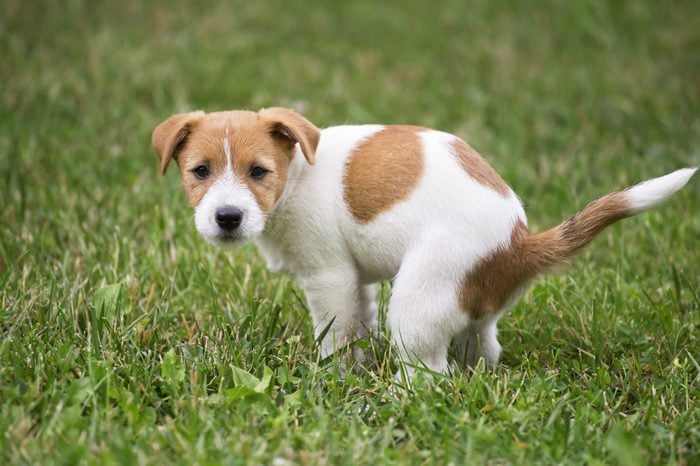
Pooping
In general, most dogs will poop one to two times per day. That said, much of the same advice that applies to peeing also applies to how often your dog poops, and there’s a direct correlation between how much food is being consumed and the quality of said food. Devereaux explains that the higher the quality, the more nutrients are being absorbed which produces less waste. Conversely, if your dog is pooping too much it could be the result of poor-quality food.
“In general, the number of times your dog poops should remain relatively constant, as should the consistency of their stool,” says Winch. “If you are seeing a sudden increase in defecation, a change in the consistency, or if your pet goes longer than 24 hours without defecating or is showing signs of straining, then an examination by your veterinarian is recommended.”
Speaking of dogs and pooping, have you ever been curious to know why your dog spins around in a circle before doing its business?
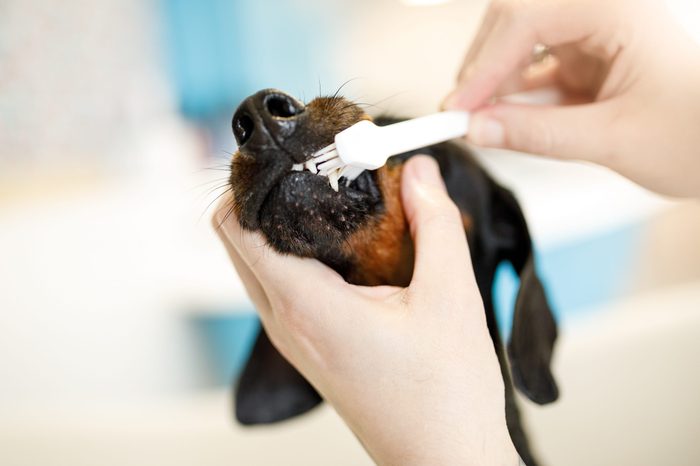
Brushing its teeth
Though oral health often gets side-stepped when it comes to our fur companions, it’s extremely important. It’s also one of the easiest things you can do to promote their overall body health—here’s how to successfully clean your dog’s teeth. “Without a routine dental care regiment, dogs run the risk of developing periodontal (gum) disease, which often causes gum infection, tooth pain and loss, and malnourishment,” explains Danielle Bernal, DVM, a veterinarian with Whimzeez daily dental chews. “Periodontal disease also has the potential to impact heart, liver and kidney function down the line, so daily care is crucial for overall health from tooth to tail.” This includes regular physical brushing of your dog’s teeth. If your dog is resistant to brushing, there are daily dental chews, such as Whimzeez, that’ll help break down plaque, tartar and bad bacteria that can resurface on the tooth in as little as 24 hours. Find out what your dog’s bad breath could be trying to tell you.
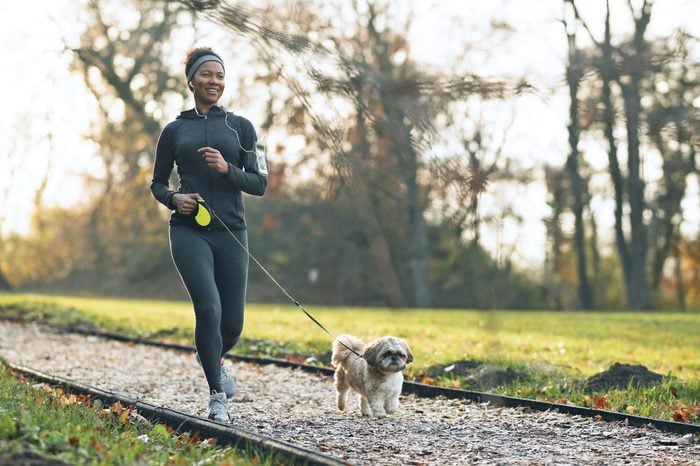
Exercising
“At a minimum, dogs should get 30 to 45 minutes of exercise every single day,” says Devereaux. “If you have an older dog with decreased stamina, an overweight dog trying to lose weight, or a large breed puppy still in its growing stage, it is best to break down the period of exercise into smaller intervals several times per day.”
Not only will exercise keep your pup’s heart in good condition and keep them mentally healthy, but it’ll also help curb weight gain. Winch says that excess weight and obesity are occurring in epidemic proportions in our pets. These conditions are linked to numerous other diseases, including arthritis, diabetes, and heart disease, so maintaining a healthy weight is all about living a healthy life. Here’s a guide to how much exercise your dog really needs.
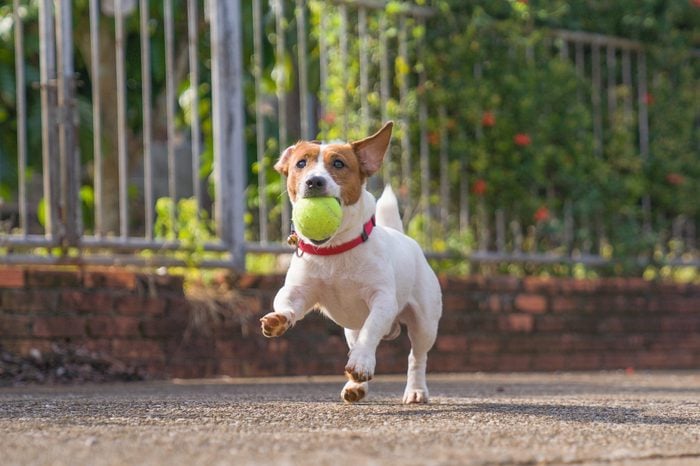
Mentally stimulating activities
On that note, another thing your dog should be doing every day is getting his or her fair share of mental stimulation. A lack of activities can lead to depression, weight gain, and even unsavory behaviors such as destroying property or excessive barking or whimpering.
“While all dogs require some form of daily attention, the amount required can vary between dogs. Training classes and daily training exercises are great ways to strengthen bonds with our pets as well as encourage good behaviors,” notes Winch. Playing fetch, using mentally stimulating toys, and simply teaching your own tricks are great options, too. Check out the 14 best puzzle toys for bored dogs if you want some more ideas.

Cuddling
In addition to good old exercise and brain-engaging activities, your pet could benefit from consistent cuddles. “Daily snuggles with pets are a very important way to bond with our animals, and, as long as the animal is open to receive them, the more the merrier,” says Devereaux. “It should be noted that, just like humans, dogs do like to have alone time, as well. If you begin to pet or snuggle your pooch and they get up and walk away, do not restrain them and do not chase them. Let them have their space and try again at a later time.”
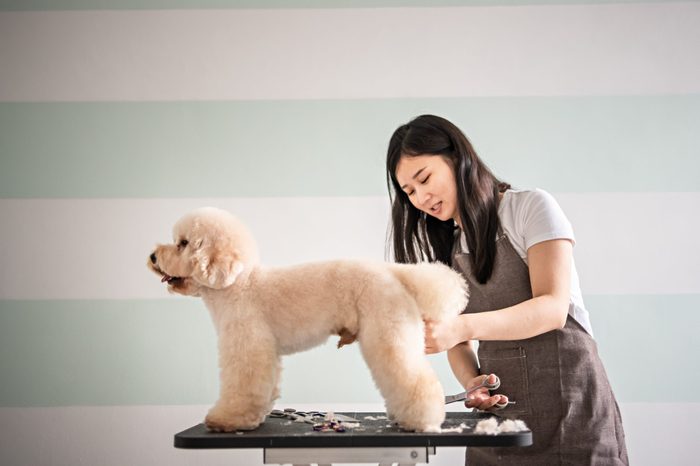
Grooming their fur
In addition to ensuring that they look beautiful, grooming your dog daily is a great way to bond and to keep up on their general physical health. “A good brushing reduces shedding, improves circulation, can prevent painful matting, and may help you detect unhealthy parasites like ticks and fleas that can infest your home,” says Dr. Winch. “Make sure you’re using a high-quality brush that won’t hurt your dog’s sensitive skin. The best brush will depend on your pet’s type and length of fur.” Brushing also distributes oil away from their skin, helps remove knots and dirt, and can reduce odor. To up your grooming game, read through these 26 secrets pet groomers wish they could tell you.
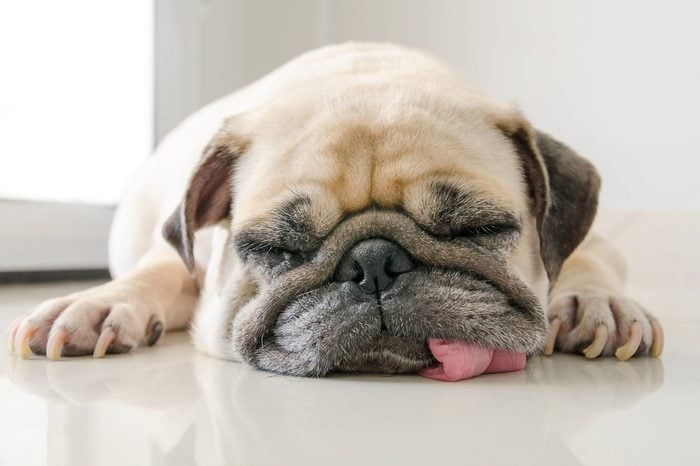
Sleeping
This isn’t a well-studied topic, notes Winch, so it’s important to note that our understanding is largely anecdotal. What we do understand is that pet sleep cycles depend on their owners, and are impacted by similar environmental factors that affect human sleep. Generally, healthy adult dogs may be awake about seven to eight during the day and about five hours during the night, says Dr. Winch. Puppies tend to need more sleep—upwards of 18 hours per day—and may actually sleep for longer periods of time immediately preceding a period of growth.
“In general, it is always important to observe your dog’s daily habits and identify what they are,” adds Devereaux. “If you see that your dog who normally sleeps 12 to 14 hours a day is suddenly sleeping for much longer periods of time—and it’s not because you completed a four-hour hike with them—it may be a good idea to schedule a health visit with your veterinarian.” Find out what your dog’s sleeping position reveals about its personality.
